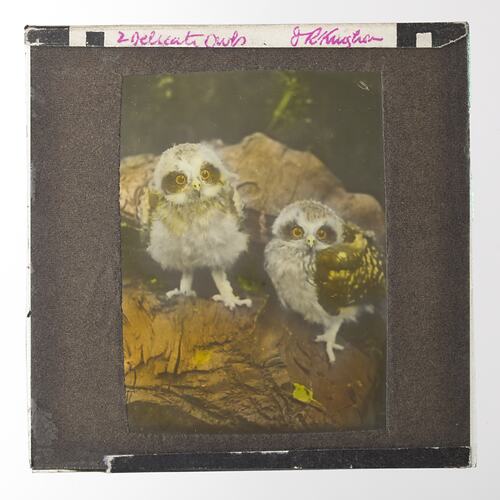Summary
James Roy Kinghorn zoologist, museum curator and broadcaster, specialised in snakes and bird life and worked for the Australian Museum (1907-1956) and the Australian Broadcasting Commission (1961-1971). Throughout his career, Kinghorn was heavily involved in public science education. He offered many public lectures and ended his career broadcasting his scientific knowledge to a wider audience through his television and radio work at the ABC.
James Roy Kinghorn (1891-1983), was born in Richmond, New South Wales on the 12th October 1891, the second of three children to James Kinghorn and wife (Bertha) Elthel (née Campbell). After school he began zoology lectures at the University of Sydney and studied part time at the Sydney Technical College. In 1907 he joined the Australian Museum in Sydney as a cadet, working with crustaceans, and was later reappointed a zoologists clerk. In 1914 Kinghorn resigned from his position at the Australian Museum in order to work as a zoological clerk for the Commonwealth Fisheries' investigation ship Endeavour, which was lost at sea before his commencement.
On the 21st of June 1915 Kinghorn enlisted in the Australian Imperial Force. He served with the Dental Corps in Egypt and on Lemnos and in November-December 1917 served on the Western Front as a driver with the artillery until a knee injury led him to be repatriated and discharged on the 23rd of July 1918.
On returning to Australia Kinghorn was reappointed at the Australian Museum as zoologist in charge of reptiles and amphibians, and in 1921 birds were added. Kinghorn remained at the Australian Museum until 1956 during which time he was heavily involved in public education, research and publication and with the wider international museum community.
Kinghorn's first publication was Snakes of Australia (1929) which was later followed by The Dangerous Snakes of the South-West Pacific Area (1943). He also contributed numerous herpetological, ornithological and natural history focussed papers and articles to scientific publications, magazines and newspapers and was heavily involved with public lectures at the Australian Museum and around New South Wales. Kinghorn often used lantern slides such as the examples in this collection to illustrate his public lecture series, which would focus on topics ranging from children's talks on 'Our Feathered Friends' to his experiences as a Naturalist within the A.I.F.
Kinghorn was a corresponding member of the Zoological Society of London (1923), a member of the Wildlife Preservation Society of Australia, a fellow of the California Academy of Sciences and served as president of the Royal Zoological Society of New South Wales between 1927-28 and 1950-56. In 1935 he was awarded the diploma of the Museums' Association of Great Britain and in 1937-38 received a Carnegie Corporation of New York grant, enabling him to visit museums in the US, Britain and Europe.
In 1941 Kinghorn was appointed Assistant Director of the Australian Museum, a position he held for 15 years. After retiring in 1956 Kinghorn remained involved with science and education, and moved into the field of television and radio. He appeared on a Channel 7 children's television show and later became involved with the Australian Broadcasting Commission where he remained from 1961-1971 working on such shows as the radio program the 'Argonauts'.
Kinghorn passed away on the 4th of March 1983, predeceased by his wife and childless.
References
Docker, R, 'Kinghorn, James Roy (1891-1983)', Australian Dictionary of Biography, National Centre of Biography, Australian National University accessed 6 August 2012.
'Kinghorn, J R (James Roy) (1891-1983)' 2008, Trove, National Library of Australia accessed 6 August 2012.
'Near and Far', 1924, The Sydney Morning Herald, 25 September, p. 5.
'Experiences of a Naturalist', 1929, The Sydney Morning Herald, 12 July, p. 8.
More Information
-
Keywords
lantern slides, ornithology, Education, World War I, 1914-1918, zoology, Museums
-
Authors
-
Article types
